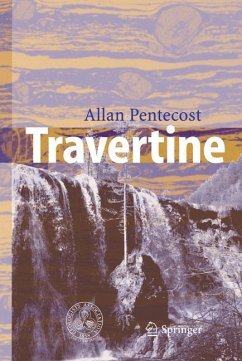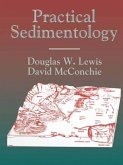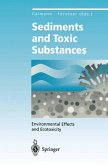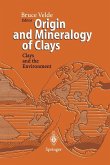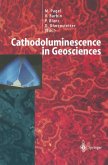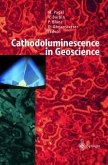This is the first book entirely devoted to travertine, a material in use for over 4000 years. The single-author work is a valuable reference source for travertine, covering all aspects of travertine origins, formation, composition, flora and fauna, occurrence and utilisation, as well as covering allied continental carbonates such as lake marls, calcretes and beachrocks. Travertine, some forms of which are often known as 'tufa', is of particular significance as a source of environmental information (fossils and isotope geochemistry), often permitting the reconstruction of past environments. Reviews of dating techniques, classification and geomorphology are included and the author attempts to provide an unbiased but critical appraisal of current models of travertine formation. Currently, travertine is in great demand as a building and ornamental stone. It has also been exploited in unconventional ways, such as 'petrifying springs' and by way of unusual and little known artistic techniques. Scaling of pipes and boilers is often the result of processes allied to travertine formation. The phenomenon is described parallel to methods of scale elimination and compared with natural processes where travertine formation is inhibited. Travertine sites are of special scientific interest, with their rich and often unique floras and faunas displaying their unique biodiversity, and their unusual and often fragile biota. Conservation issues are discussed, together with the description of travertine fossils and occurrences throughout the geological record.The content will be of interest to carbonate sedimentologists, hydrobiologists, palaeoclimatologists, physical geographers, water treatment engineers, astrobiologists, architects, and sculptors.
uring the spring of 1960, an uncle showed me a 'petrifying spring' near Plaxtol in Kent Dwhere twigs had been encased in a calcareous jacket. A twig was collected and having - cently been given I. Evan's Observer's Book of Geology by my parents, I found a photograph of another petrifying spring and an explanation of its origin. In those days, Derbyshire was too far for a holiday destination, and I took little further interest until a research studentship with Professor G. E. Fogg became available in 1971. Tony Fogg had recently moved to the University College of North Wales, Bangor and the research was to be into cyanobacterium mats, with fieldwork along the Red Sea coast. The fieldwork never materialised but my interest in algal mats had been aroused. A chance stroll along the Bangor shore revealed beautifully calcified cya- bacterium mats, and Tony generously allowed me to investigate these instead. The old Plaxtol collection was retrieved and yielded abundant cyanobacteria. Itbecame apparent that here was a wealth of information about a rock whose formation was so rapid, that the process could be studied in days rather than years - an exceptional state of affairs. A search of the literature also revealed that the rock, a form of travertine, had other unusual features.
uring the spring of 1960, an uncle showed me a 'petrifying spring' near Plaxtol in Kent Dwhere twigs had been encased in a calcareous jacket. A twig was collected and having - cently been given I. Evan's Observer's Book of Geology by my parents, I found a photograph of another petrifying spring and an explanation of its origin. In those days, Derbyshire was too far for a holiday destination, and I took little further interest until a research studentship with Professor G. E. Fogg became available in 1971. Tony Fogg had recently moved to the University College of North Wales, Bangor and the research was to be into cyanobacterium mats, with fieldwork along the Red Sea coast. The fieldwork never materialised but my interest in algal mats had been aroused. A chance stroll along the Bangor shore revealed beautifully calcified cya- bacterium mats, and Tony generously allowed me to investigate these instead. The old Plaxtol collection was retrieved and yielded abundant cyanobacteria. Itbecame apparent that here was a wealth of information about a rock whose formation was so rapid, that the process could be studied in days rather than years - an exceptional state of affairs. A search of the literature also revealed that the rock, a form of travertine, had other unusual features.
From the reviews:
"This is the first book devoted entirely to travertine ... . It is really everything you wanted to know about travertine, and more! ... the book is generally well presented with a consistent format and the nice use of figures and tables. There are twenty-two excellent photo plates ... . an excellent resource." (Mark Stephens, Journal of Sedimentary Research, August, 2006)
"In conclusion, Travertine is an excellent contribution, condensing the large literature base on travertine into one book. The book's strength is the thorough, well-organized, and interdisciplinary survey of travertine, reflecting the author's extensive experience with the topic. Each chapter in this book provides and excellent starting point and literature review to launch more detailed inquiries about travertine and travertine depositing systems." (Dennis L. Newell, EOS Newsletter, vol. 88, no. 22, 29 May 2007)
"This book is an excellent compilation of important ideas and key information covering much of the available literature on freshwater carbonate deposition in both ambient temperature and thermal situations. It is particularly valuable to researchers as a source book as it contains over 1200 cited references, together with 102 figures ... . I found it a most enjoyable read. Certainly, I would warmly recommend it to colleagues and all those wishing better to understand freshwater limestones." (Martyn Pedley, Geological Magazine, Vol. 144 (3), 2007)
"This is the first book devoted entirely to travertine ... . It is really everything you wanted to know about travertine, and more! ... the book is generally well presented with a consistent format and the nice use of figures and tables. There are twenty-two excellent photo plates ... . an excellent resource." (Mark Stephens, Journal of Sedimentary Research, August, 2006)
"In conclusion, Travertine is an excellent contribution, condensing the large literature base on travertine into one book. The book's strength is the thorough, well-organized, and interdisciplinary survey of travertine, reflecting the author's extensive experience with the topic. Each chapter in this book provides and excellent starting point and literature review to launch more detailed inquiries about travertine and travertine depositing systems." (Dennis L. Newell, EOS Newsletter, vol. 88, no. 22, 29 May 2007)
"This book is an excellent compilation of important ideas and key information covering much of the available literature on freshwater carbonate deposition in both ambient temperature and thermal situations. It is particularly valuable to researchers as a source book as it contains over 1200 cited references, together with 102 figures ... . I found it a most enjoyable read. Certainly, I would warmly recommend it to colleagues and all those wishing better to understand freshwater limestones." (Martyn Pedley, Geological Magazine, Vol. 144 (3), 2007)
Aus den Rezensionen: "Das weltweit wahrscheinlich erste vollständig und nur dem Travertin gewidmete Lehrbuch liegt als eine sehr umfassende Arbeit vor. ... Ein ... 40-seitiges Literaturverzeichnis, 22 Phototafeln mit weltweiten Beispielen und ein brauchbares Sachverzeichnis runden dieses Lehrbuch ab und erschließen es dem Leser gut. Der Verf. legte hier ein umfassendes und umfangreiches Werk vor, das den heutigen Kenntnisstand über das faszinierende Gestein Travertin zusammenfasst ... Diesem Buch ist eine weite Verbreitung zu wünschen!" (S. J. Marks, in: Zentralblatt für Geologie und Paläontologie Teil II, 2007, Issue 5-6, S. 748 f.)

